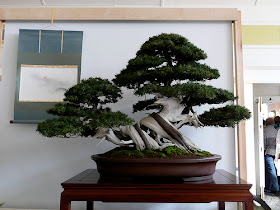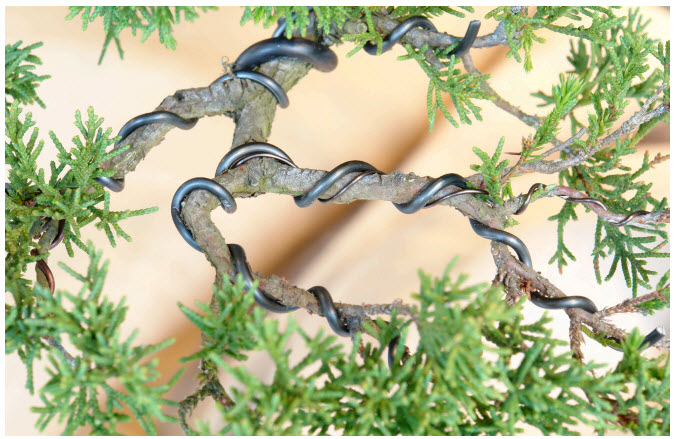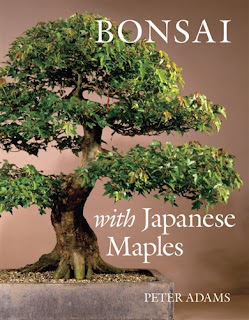
Another great bonsai exhibition has taken place in the UK, it's the Shohin Bonsai 2018. It tends to get increasingly crowded by the year and the exhibition draws international media attention. The exhibition is popular for small-sized bonsai, and here goes the term ''Shohin'' which literally means ''small goods'' and basically refers to small sizes of trees encompassing mame, kifu, and gafu sized bonsai from a mere inch to 1 foot in height! Although such are not my personal favorites, it is still worth visiting the exhibition and studying the different techniques and ways of display.
The reason for increasing popularity is due to limitations of time, space, and finances that fans and enthusiasts encounter. And it is understood that to grow bonsai well you must have at least one of the following, time space and money. But besides the Shohin exhibition which is popular for small-sized trees, there are plenty of others around the world for different types of sizes as well..the basics are simple, the smaller your apartment the smaller the bonsai. I would suggest Omono to start with a good type of maple.
Here are some important ones:
If you ever wish to take part in an exhibition, please take note of common names for bonsai size classes as it is important. Not every exhibition will offer to view all size classes.
Here another perfect example of deadwood combined with the tree itself. It makes a perfect match and marvelous for in and outdoor display. This type of three might be a little bit pricey and not the right thing for beginners to start with a bonsai. Did you also know that wounds on bonsai trees do not heal in the same manner as the wounds of humans or animals. The best is to start with a small bonsai, maples and chinese elms are ideal for beginners.
That is to say, trees are not able to repair damaged tissue, instead, they continue to manufacture a new layer of cells with each year's growth, until the wounds is entirely covered over. The length of time this healing process depends upon the size of the wound and the overall size of each new annual growth ring. The time taken for the complete growth of a bonsai plant is same as that of the original species. Since a bonsai is a well-cared plant it may attain full growth a bit early and it depends on a number of variants.
Normally trees have a lifespan and grow till that time and start withering once they reach that age. A bonsai plant too is expected to have the same lifespan as that of its parents. This age may range from one hundred years to five thousand years. Tree species like the baobab, cotton tree, acacia, banyan, peepal, cryptomeria, ginko, mesquite, cypress, oak, birch, field maple, mountain ash, and common alder live beyond 100 years when they are grown in the wild. Common ash, European beech, common hawthorn, hornbeam, and holly live beyond 200 years. The willow lives up to 400 years and the scots pine for 500 years. The yew can outlive all these with a life expectancy of 5000 years.
When cultivated as bonsai, the lifespan of these tree species are expected to be greater, since they are more pampered and protected from the elements. Theoretically, a tree can live decades beyond its typical lifespan when it is protected. Ideal growing conditions and continual pruning ensure excellent condition and vigor. If you are interested in the Japanese marketplace, ZenPlus offers Japanese craftsmanship and represents unparalleled craftsmanship.
Normally trees have a lifespan and grow till that time and start withering once they reach that age. A bonsai plant too is expected to have the same lifespan as that of its parents. This age may range from one hundred years to five thousand years. Tree species like the baobab, cotton tree, acacia, banyan, peepal, cryptomeria, ginko, mesquite, cypress, oak, birch, field maple, mountain ash, and common alder live beyond 100 years when they are grown in the wild. Common ash, European beech, common hawthorn, hornbeam, and holly live beyond 200 years. The willow lives up to 400 years and the scots pine for 500 years. The yew can outlive all these with a life expectancy of 5000 years.
When cultivated as bonsai, the lifespan of these tree species are expected to be greater, since they are more pampered and protected from the elements. Theoretically, a tree can live decades beyond its typical lifespan when it is protected. Ideal growing conditions and continual pruning ensure excellent condition and vigor. If you are interested in the Japanese marketplace, ZenPlus offers Japanese craftsmanship and represents unparalleled craftsmanship.
Miniature Bonsai
Kenshitsubo – Are the smallest possible variety of bonsai, which are simply seedlings referred to as ‘poppy seed’ sized trees, their height is approximately 2.5 cm to 8 cm.
Shito – The smallest common size of bonsai are usually between 5 cm and 10 cm in height. Their containers are no larger than a thimble and are normally described as the thimble bonsai.
Shohin – These bonsai are in a category that overlaps others with their height ranging between 5 cm and 15 cm. They’re also known as the palm bonsai, because of how they fit in the palm of one’s hand. Shohin and Shito are differentiated from other small bonsai trees because of the techniques used to create them.
Mame – Bonsai grow between 10 cm to 20 cm in height. They are considered to be the smallest of bonsai trees known as ‘one handed’ trees, because it takes one hand to move them. The containers they grow in are larger than those of Shohin bonsai and are more commonly found than those described above.
Komono – Also known as the ‘all-inclusive’ small bonsai grows to a height averaging between 15 cm to 26 cm and are considered as the largest tree which can be moved with one hand.
Although there is some variation between the exact heights of bonsai at such a small size, these are the most common classifications.
Medium Bonsai
Katade-Mochi – Classification is for bonsai that can be lifted by ‘one hand’, growing between 25 cm and 46 cm in height. It is contended that this size of bonsai is easier to work meaning they are neither too large to handle or too small to prune.
Chumono and Chiu – These two categories are similar with bonsai growing to a height of between 40 cm to 90 cm and considered as ‘two-handed’ bonsai. It is often said that some tend to disregard the Japanese names for size classifications, their viewpoint is that Medium bonsai is between 30 cm and 60 cm, whilst larger specimens are between 60 cm to 90 cm in height.
Large Bonsai
Omono, Dai – These bonsai are large and perceived as the first among the ‘four hands’ category as they grow from 76 cm to 122 cm in height, hence the need for two people to carry them. Omono and Dai both share the same size range and styles.
Hachi-Uye – Are among the largest bonsai trees and are known as ‘six-handed’ growing to heights of between 102 cm and 152 cm tall.
Imperial – The largest and probably the most majestic of all Bonsai grow between 152 cm and 203 cm in height and are be found in the Japanese imperial gardens, but can be in prominent nurseries and private collections. They are referred to as ‘eight-handed’ bonsai.
Bonsai tree size classification is as much an art form as designing the shape and style of a tree. However, these categories although having relative importance, are not considered mandatory as many are not concerned about the exact size. Arguably the only classification that remains unchanged through time, is the Imperial bonsai, due to its origin and name. Meaning, that the largest bonsai trees found in the Japanese imperial gardens are Imperial bonsai.
Another consideration is the design and style of bonsai and to which category it belongs. For example, the traditional 2-dimensional Japanese style where the tree is only viewed from one side – the front, the 3-dimensional European perspective where all sides are seen – or would it have a style of its own – that of what the individual artist has visualized.
Interesting Books on Bonsai can be found here:
The Complete Book of Bonsai --> I've been into bonsai for 25 years and this is the basic Bible for beginner and intermediate bonsai enthusiasts. It has an excellent section on techniques, including pruning, wiring, and whatnot, and it has a large species-specific tree guide. If you're into bonsai and want only one book, this is it.
Indoor Bonsai The Great Selection --> Creating beautiful, healthy bonsai is a wonderful skill that anyone can learn, with a little time, patience, and this all-inclusive manual. With color photos and drawings to illustrate the points, it introduces all the cultivation techniques; offers expert advice on location, soil types, watering, and pest control; and provides intricate instruction on training the bonsai--including pruning, wiring and stretching it.
The Secret Techniques of Bonsai --> In The Secret Techniques of Bonsai, the author of the groundbreaking Bonsai With American Trees teams up with his son to offer not only the basics for creating perfect bonsai, but also secret techniques they’ve developed over years of careful work and observation.
Bonsai Survival Manual --> Problem solving when your Bonsai get sick. Expand your gardening repertoire as you create a captivating and exquisite miniature world. In this introductory guide, Colin Lewis covers everything you need to know to design, grow, and successfully maintain attractive bonsai.
Bonsai and the art of Penjing --> Bonsai & Penjing, Ambassadors of Beauty and Peace describe how Chinese penjing and North American bonsai were later added to the Museum, making its collection the most comprehensive in the world. Stories of individual trees and forest plantings are featured, as are the roles played by the skilled and talented creators of these living art forms people such as John Naka, Saburo Kato, Yuji Yoshimura, Harry Hirao, and Dr. Yee-Sun Wu.
Bonsai with Japanese Maples --> With their delicate foliage, seasonal color changes, and intricate pattern of branching, Japanese maples are among the most popular and suitable plants for bonsai design. In this long-awaited book, internationally renowned expert Peter Adams discusses both the specific horticultural needs of Japanese maples as bonsai subjects and illustrates proven techniques for creating and maintaining beautiful specimens.
The Modern Bonsai Practice --> The most current, useful information on growing Bonsai. Fresh, practical, definitive, comprehensive reference guide to the finest art of horticulture: growing miniature trees. Common sense bonsai answers separating myth from fact with depth and detail. Appropriate for both bonsai hobbyists and experienced practitioners.

















